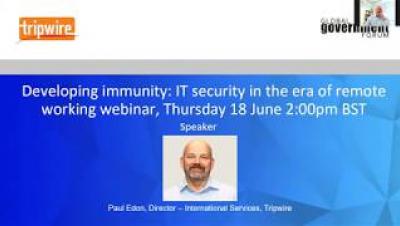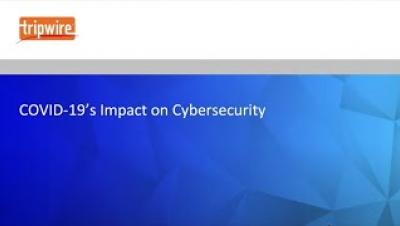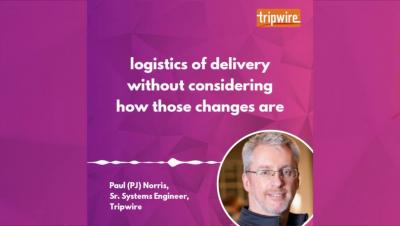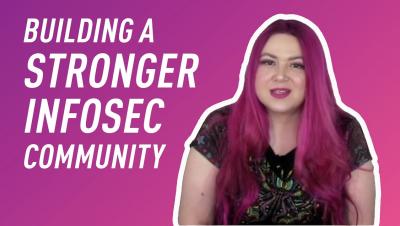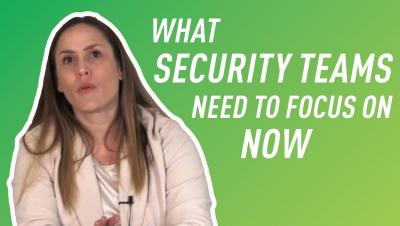Security | Threat Detection | Cyberattacks | DevSecOps | Compliance
June 2020
The CSA IoT Security Controls Framework
The Internet of Things (IoT) is growing in technical, social, and economic significance. ENISA defines the increasingly complex IoT systems as “cyber-physical ecosystem[s] of interconnected sensors and actuators, which enables intelligent decision making.” These technologies collect, exchange and process data in order to dynamically adapt to a specific context, transforming businesses and the way we live.
Into the Dark: Scratching the Surface of the Dark Web and Its Potential Risks to Users
Numerous data leaks appeared on the dark web in the second quarter of 2020. At the end of May, for instance, Cyble found a government database containing the personal information of more than 20 million Taiwanese citizens for sale on an underground web marketplace. That was less than two weeks before The Economic Times reported on a dark web data leak involving BEML, an Indian public sector undertaking.
What to Expect from Brazil's New Data Protection Law
The European GDPR (General Data Protection Regulation) is one of the most influential consumer privacy laws that has affected 500,000 companies throughout the world. This law has played a crucial role in formulating another substantial privacy law known as the California Consumer Privacy Act that came into effect on January 1, 2020.
Foundational Controls Make the Hard Things Easier to Do
Let’s begin with a short story. Imagine that we have two large organizations in the public sector. These entities are very similar. Both are on the receiving end of cyber threats. Both adhere to multiple compliance standards. And both need to ensure that their IT systems are functioning and working as planned. But they’re not entirely the same. Take Organization A, for example.
How to Reduce the Risk of Misoperations in Your Bulk Electric Systems
Reliability is essential to the functionality of an electric power grid. This principle guarantees that a constant qualitative and quantitative supply of electric power is flowing from a provider to businesses, homes and more. It’s what enables electric power to drive life forward in modern society. As a result, there’s reason to be concerned about events that threaten the reliability of the power grid. Those events include misoperations.
State of Insider Data Breaches in 2020
Organizations protect critical assets and sensitive information from the outside world by continually updating their security controls and policies. However, the origin of a breach is not always outside of the organization, and recently, insider breaches have gained attention amid an increase in the flexibility of tools for information sharing. Insider threats can be accidental or intentional, but the impact of insider breaches remain the same.
Transportation Systems Sector Cybersecurity Framework Implementation Guide
As smart ticketing systems and technological solutions become more prevalent in the transportation industry, the issue of transportation systems’ cybersecurity becomes a greater concern.
Beyond Passing the Test: Lessons from My Infosec Certification Journey
Not everything that tastes good is healthy, and not everything healthy tastes good. I think of exams as the latter. They are one way to test knowledge, and that attitude is a big part of how I survived getting certified. After taking all kinds of exams, one thing hasn’t changed – I don’t like them. I get anxious when faced with tests. I dislike the all-or-nothing of each question.
Ask the Experts: Improving your Vulnerability Management (VM) Program
Amazon Web Services Mitigated a 2.3 Tbps DDoS Attack
Amazon Web Services (AWS) said that it mitigated a distributed denial-of-service (DDoS) attack with a volume of 2.3 Tbps. In its “Threat Landscape Report – Q1 2020,” AWS Shield revealed that its team members had spent several days responding to this particular network volumetric DDoS attack. In Q1 2020, a known UDP reflection vector, CLDAP reflection, was observed with a previously unseen volume of 2.3 Tbps.
Copied master key forces South African bank to replace 12 million cards
Fraudsters stole more than $3.2 million from the banking division of South Africa’s post office, after – in a catastrophic breach of security – employees printed out the bank’s master key. According to South African media reports, the security breach occurred in December 2018 when a copy of Postbank’s digital master key was printed out at a data center in Pretoria.
COVID-19's Impact on Cybersecurity: Tripwire Survey Findings
The MITRE ATT&CK Framework: What You Need to Know
The MITRE ATT&CK Framework has gained a lot of popularity in the security industry over the past year. I have spent a lot of time researching the hundreds of techniques, writing content to support the techniques, and talking about the value to anyone who will listen.
The COVID-19 Pandemic Dominates the Cybersecurity World
Cybersecurity is not a static world. You can say that it is a social system, it affects and is affected by its surrounding environment. For example, back in 2018, it was the GDPR that shook the foundations of security and privacy by making the protection of our personal data a fundamental human right. But that was then. What is shaping today’s cybersecurity? This is the question that the Infosecurity Magazine State of Cybersecurity 2020 report investigates.
COVID-19's Impact on Cybersecurity
Building on the IAM Benefits of SSO with MFA and Privileged Access Management
In part one of this post, we talked about why identity access management (IAM) is important. In that discussion, we identified three types of IAM: We discussed the different types of single sign on and some examples of what can be used to help streamline the user experience. Let’s now discuss how you can pair single sign on with other two types of identity access management.
The Importance of Implementing an Information Security Policy That Everyone Understands
Information security (IS) and/or cybersecurity (cyber) are more than just technical terms. They’re the processes, practices and policy that involve people, services, hardware, and data. In particular, IS covers how people approach situations and whether they are considering the “what if’s” of malicious actors, accidental misuse, etc. I’m not sure about your operations teams, but no one in any of mine, myself included, were able to read minds.
Babylon Health App Leaked Patients' Video Consultations
Babylon Health, makers of a smartphone app that allows Brits to have consultations with NHS doctors, has admitted that a “software error” resulted in some users being able to access other patients’ private video chats with GPs.
Ask the Experts: Lessons Learned from Cloud & DevOps
The MITRE ATT&CK Framework: Command and Control
Most malware these days has some level of Command and Control. This can be to exfiltrate data, tell the malware what instructions to execute next, or download encryption keys in the case of ransomware. In each case of command and control, the attacker is accessing the network from a remote location. Having insight into what is happening on the network is going to be crucial in addressing these techniques.
Ask the Experts: Building a Stronger Cybersecurity Community
How ExpertOps Can Help You Address the Infosec Skills Gap
Are you struggling to hire skilled digital security talent in 2020? If so, you’re not alone. According to a Tripwire study on the infosec skills gap, 82% of security experts said that their teams were understaffed; nearly the same proportion (83%) indicated that they were feeling more overworked going into 2020 than they were a year prior.
Three New Ways Tripwire Enterprise Can Help Monitor Ephemeral Assets in Dynamic Cloud Environments
Moving applications and infrastructure to the cloud offers a degree of flexibility and scalability that can be a boon to almost any organization. Having continuous software and asset availability in cloud environments with elastic, as-needed infrastructure is extremely valuable. Sharing security responsibilities with a cloud service provider can even unburden security and IT teams to a degree.
Final Version of NIST SP 1800-23 Guides Identification of Threats to OT Assets
In September 2019, the National Cybersecurity Center of Excellence (NCCoE) at the National Institute of Standards and Technology (NIST) announced the release of a draft practice guide entitled, “NIST Special Publication (SP) 1800-23: Energy Sector Asset Management.” The NCCoE spent the next two months collecting comments from the public to improve their guide. They then used this feedback to improve upon their initial draft. But the wait is finally over.
Why NHS, UK Healthcare Orgs Need to Boost Their Security in Age of COVID-19
All National Health Service (NHS) and social care organisations in the United Kingdom have always been and will always be a target for bad actors. The nature of their business and the sensitive data they hold make these entities appealing to bad actors who know that legacy systems, and/or, not regularly patched systems, such as those employed by healthcare organizations are easy to penetrate.
The scammer who tried to launder over $500,000 through Business Email Compromise
A 64-year-old man has pleaded guilty in a Texan court to charges of money laundering after a series of attacks that defrauded companies out of hundreds of thousands of dollars. Kenenty Hwan Kim (who sometimes went by the name Myung Kim) took advantage of a simple trick that has proven highly effective to fraudsters in recent years. The method of tricking businesses into handing over large amounts of money is known as Business Email Compromise (BEC), and comes in a variety of flavours.
Ask the Experts: What Security Teams Need to Focus on Now
Contact Tracing: De-mystifying How an App Designed to Track People Can Ensure User Privacy and Security
Many governments in many countries around the world recognise that contact tracing plays a very important part to reduce the spread of the deadly disease, COVID-19. In this article, we take a look at the conventional method of contact tracking and comparing it against how technology helps contact tracing and its pro’s and con’s.
Cybersecurity Must be an Integral Part of any Pandemic Response Plan from Now On
Sometimes the best way to inform ourselves about how cybersecurity is dealing with a new threat, technology, or situation is to just ask. COVID-19, and the resulting lockdowns, quarantines and economic changes certainly counts as a ‘situation’ for cybersecurity.


